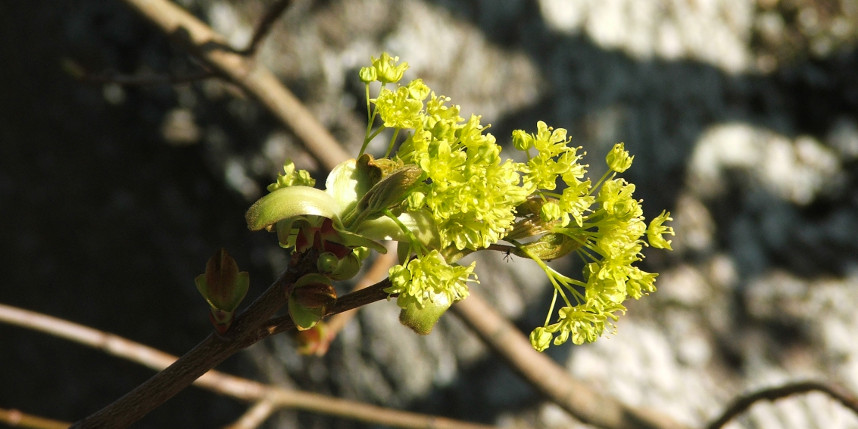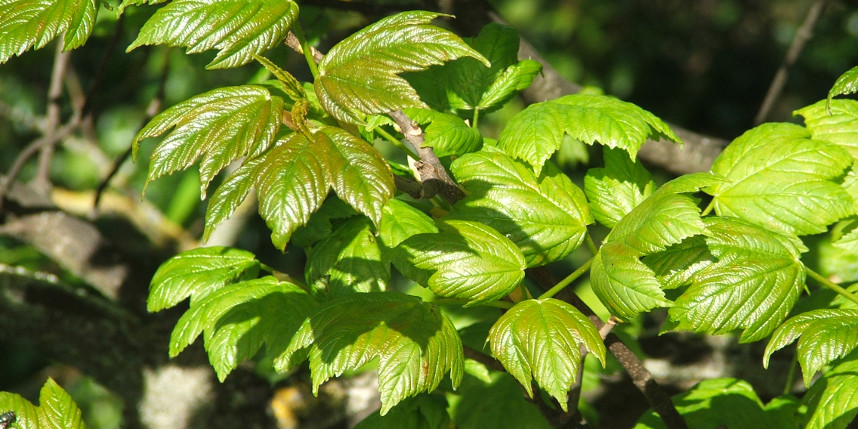Spring is pretty well past and, judging by the weather, the start of summer is under way. The buds have morphed into leaves and everything is a beautiful shade of green. However, I have to admit that I do love the freshness of spring. Some of the local trees have been putting on quite a show this year - first with spring colour and now with their early summer blooms. The following are some of the photos of the roadside trees I took this spring.

Hawthorn bushes tend to be roadside shrubs these days and there are plenty of them around here. Their thorns are pretty lethal, more than capable of penetrating the sole of the shoes of unsuspecting walkers (like me) or their dog's paws. The leaves are well developed on the bushes now and the flowers are in bloom. The old Scottish saying 'Ne'er cast a cloot til Mey's oot' is a warning to those who want to put away their winter clothes - 'Don't take off your winter clothes until the hawthorn flowers (or May blossoms) are in bloom'. I think we're OK to put away those wooly jumpers now.
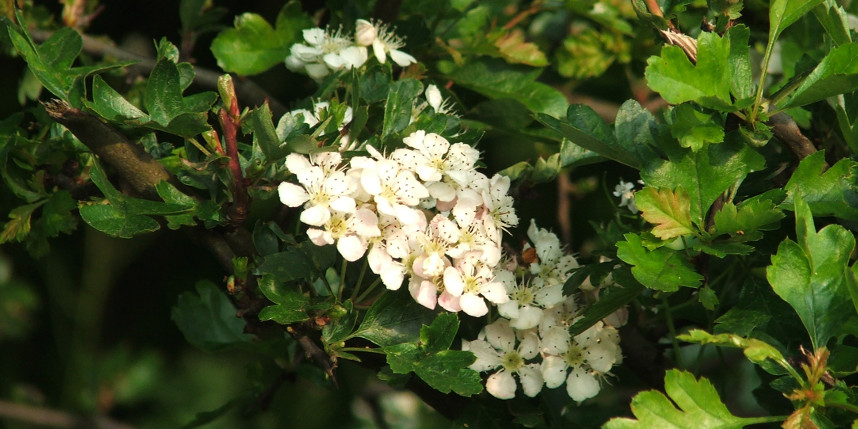
The colours of the leaves this year were rather fabulous though. The local wych elms (or Scot or Scotch elm) have the most vibrant green leaves with a ridged texture. Its name, wych, supposedly comes from the Old English word wice, meaning pliant or supple although I cannot find an explanation for why other than it having supple young shoots. It is often planted in churchyards and parks in Britain. Strangely, the wood was the preferred material for making coffins too - although I doubt the two things are connected. As a spring flowering tree is also a great food source for wildlife. The seeds are eaten by birds and moth caterpillars eat the leaves.
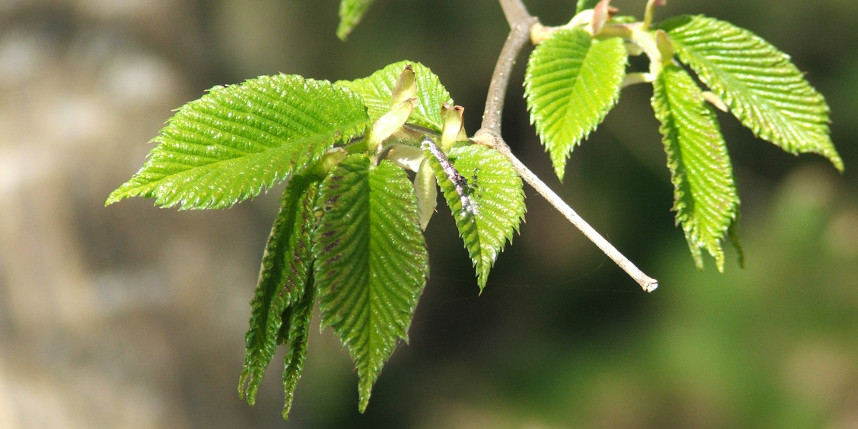
Sycamore buds always fascinate me. As an artist, they remind me of miniature sculptures. However, sycamores have a long history in art and culture, symbolising protection, strength and reliability. The Ancient Egyptian goddess Hathor was called the 'Lady of the Sycamore', sycamores are mentioned in both the New Testament of The Bible and the Jewish Etz Chayim or Tree of Life and Shakespeare mentions them multiple times through his plays, e.g. in Romeo and Juliet, Othello and Love's Labour's Lost, to name but three. Do an online search for 'sycamore poetry' or 'sycamore art' and you will find a multitude of examples, with people still writing about them today. It has held a place in people's hearts for a long time.
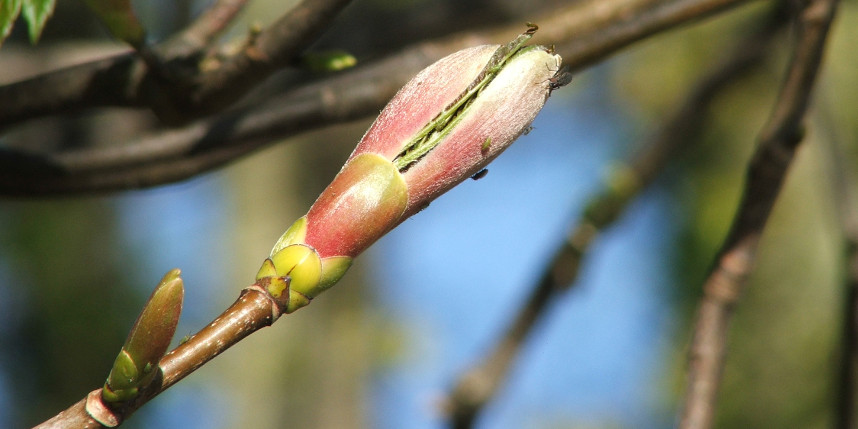
Lime trees (or linden trees as they are sometimes known) are considered a symbol of fertility in some places. However, in other countries they are considered a symbol of freedom and used to commemorate battlegrounds. Such a difference between in its symbolism - one about life, the other about death. One of my favourite stories from ancient Rome concerns the poor and elderly couple, Baucis and Philemon. They were the only people in a village to show hospitality to a disguised Zeus. When it was time for both to die she was turned into a linden tree and he into and oak. Like many flowering trees in the spring, they are an important source of food for all kinds of insects, from bees, aphids and ladybirds to moth caterpillars.
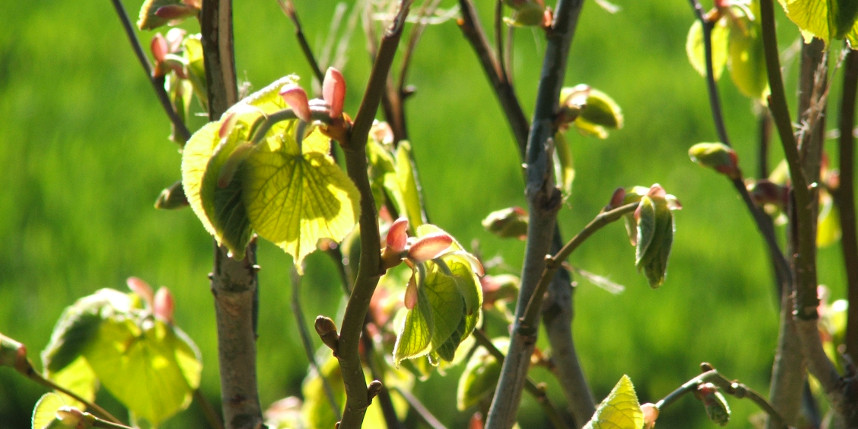
There are not only native British trees in the area. The Norway maple grows in the hedgerows next to sycamores and field maples. It is actually an invasive species In the UK because it out-competes the native species. So far I have seen the three species co-exist quite happily but there does seem to be a problem with the Norway maple's thick canopy cutting down the light underneath it. Fewer wild flowers grow in the places where the Norway maples sit, as opposed to the sycamores and field maples where there are forget-me-nots, red campion and garlic mustard growing.
